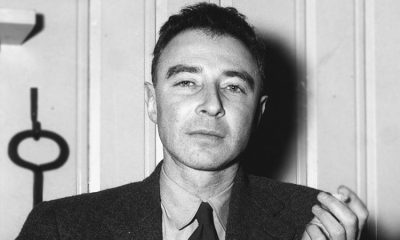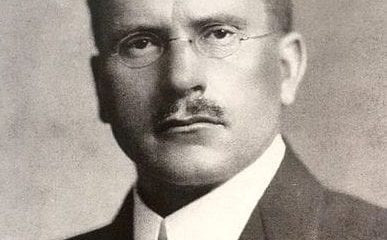Psychologists
Abraham Maslow
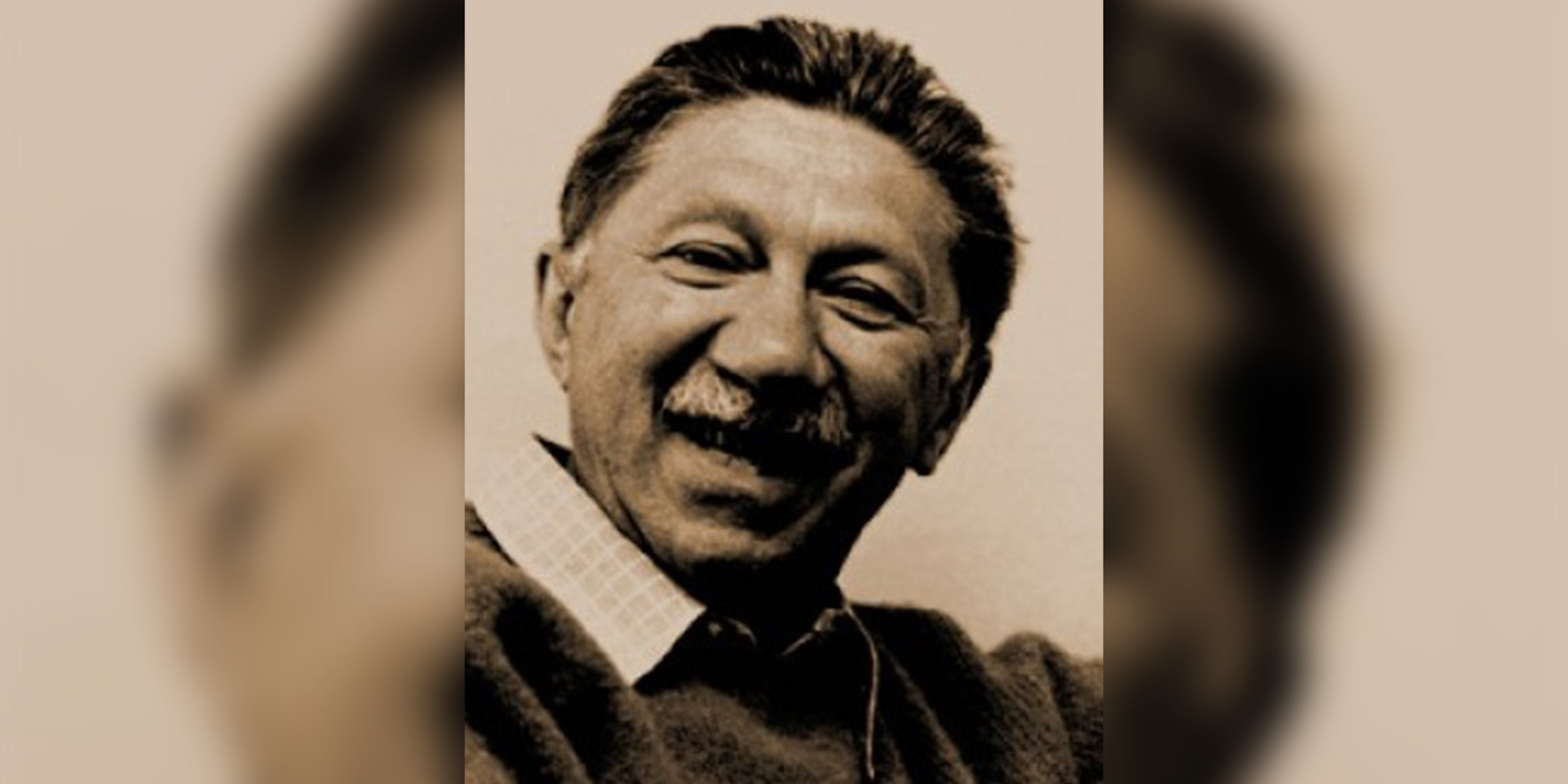
Abraham Maslow biography
Abraham Harold Maslow (April 1, 1908 – June 8, 1970) psychologist and psychiatrist, founder of humanistic psychology. He was born in Brooklyn, New York, United States. His parents were Jewish emigrants from Russia. As a child, he was raised strictly and that is why he was an orderly young man. Although he had several brothers he was lonely and unhappy. One of the reasons why he did not have a happy childhood was because of his Jewish beliefs in a non-Jewish space. The children of his school and his neighborhood did not understand it and many times they made fun of him because he was a Jew. So, Abraham saw libraries and books as a refuge.
When finishing school, Maslow thought to go to Law school, but finally, he inclined by psychology. Maslow attended the School of Postgraduate of the University of Wisconsin. In December 1928, before graduating, he married his elder cousin, Bertha Goodman, during that time he met his main mentor, Professor Harry Harlow. Thanks to his influence Maslow began a line of research, studied sexual behavior and the domination of primates, we must mention that this was a completely new subject. Maslow obtained his master’s degree in 1931 and received his doctorate four years later. In that year he proposed the psychological theory that we now know as Maslow’s Hierarchy of Needs.
This theory focuses on the study of human motivation. One year after graduation, he moved to New York to work with Edward Thorndike at Columbia University, where he became interested in the investigation of human sexuality. Alfred Adler, one of Sigmund Freud’s first colleagues, was very important in this process. Subsequently, he advanced studies at the College of Brooklyn College of the City University of New York, where he obtained a position as a full-time professor. In New York, he had the opportunity to work with illustrious figures such as Alfred Adler, Erich Fromm, Karen Horney, as well as several Gestalt and Freudian psychologists.
He also made several works with the anthropologist Ruth Benedict and Gestalt psychologist Max Wertheimer, with whom he linked a relationship based on professional and personal admiration. Maslow analyzed his behaviors, which was the basis of his research and thought throughout his life on mental health and human potential. In 1951 Maslow moved to Boston to fulfill the position of head of the department of psychology at Brandeis University, where he remained for ten years. At this time he met Kurt Goldstein, who introduced him to the concept of self-realization.
It was here where he began his adventure in favor of humanistic psychology, developed the central thesis of the pyramid of needs, which is currently applied in various fields of psychology, even beyond, expresses that human beings have structured needs in different strata, then the secondary or superior needs arise while the most basic ones are being met. This theory has been applied in labor psychology, which seeks to strengthen the esteem of workers, help them grow, self-fulfill and innovate in the company. Maslow dedicated several lines to this topic, adopted ideas from other psychologists and added his own contribution in a significant way, highlighting the concepts of the hierarchy of needs and self-realization, those of meta-needs, meta motivation and sublime experiences.
Maslow became the leader of the humanistic school of psychology founded in the 1950s, which he called “third force” we must understand that it goes beyond Freudian theory and behaviorism. In 1967, thanks to his work he was awarded by the American Humanist Association which named him Humanist of the Year. In the last years of his life he devoted himself to the teaching activity, Maslow devoted himself to a great theoretical project: to develop a philosophy and ethics that agreed with the hypotheses of humanistic psychology but did not complete it. On June 8, 1970, he died in California due to myocardial infarction.
He published several works as Motivation and Personality (1954), Psychology of Being (1962) and The Psychology of Science (1966), Abraham H. Maslow postulated that each individual has hierarchical needs -physiological, affective, self-realization- that should be satisfied, and that psychotherapy aims to enable the integration of being. His theory is within holism and humanistic psychology and Maslow defends the idea that man is an integrated and organized whole, without differentiated parts. Any reason that affects a system affects the whole person. Maslow developed a critique of the theories of Sigmund Freud and Clark L. Hull.
For Maslow, Freud’s model only refers to the neurotic behavior of subjects who cannot stand frustrations, while Hull’s theory deals exclusively with organisms s for a deficit situation. In response, the psychologist proposed a theory of growth and development based on a healthy man, in which the key concept for motivation is that of necessity. Maslow said that were the following: physiological needs, protection or safety needs, social needs of love and belonging to a group, needs for esteem and recognition and, finally, need for self-realization, understood as the realization of all the potential that holds the individual.

Doctor
Carl Gustav Jung
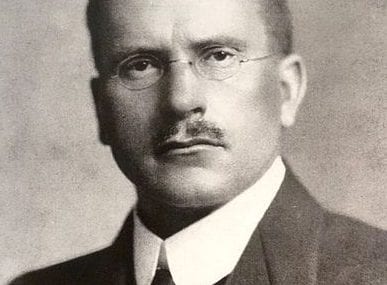
Biography of Carl Gustav Jung
Carl Gustav Jung (July 26, 1875 – June 6, 1961) was a Swiss psychologist, physician, and essayist born in Kesswil, Canton of Thurgau. He is recognized as the founder of the school of analytical psychology and a pioneer in the study of deep psychology. Jung focused on the theoretical theme of the functional connection between the structure of the psyche and its cultural manifestations, thus studying various subjects including anthropology, dream interpretation, mythology, religion, and philosophy.
Jung studied at the University of Zurich, where he later served as the medical director.
Proximity to Sigmund Freud
In 1902, Carl Gustav Jung worked with Pierre Janet at the Salpêtrière and at the Burghölzli clinic under the guidance of Eugen Bleuler. It was at the latter where he published his study Diagnostiche Assoziations-Studien (1906), which gave him popularity. The following year, he had the opportunity to meet Sigmund Freud and establish a strong personal and working relationship. In fact, he served as an editor for one of Freud’s works, Jahrbuch für psychoanalytische und psychopathologische Forschungen.
Divergences with Sigmund Freud
Carl Gustav Jung was the president of the International Psychoanalytic Association. By 1912, he had demonstrated some divergences with Freud and shortly after they decided to part ways. Jung began to develop his “analytical psychology” doctrine. Later, he published “Psychologische Typen,” in which he defined some fundamental orientations of human personality that exist in cultures and individualities.
Throughout his career, Jung carried out ethnopsychological explorations in areas such as North Africa, New Mexico, Kenya, and the East. In several of his works, he received collaboration from Richard Wilhelm, Heinrich Zimmer, and Károly Kerenyi. He went on to write several important works after his separation from Freud:
- Über die Energetik der Seele (1928)
- Seelenprobleme der Gegenwart (1929)
- Das Geheimnis der Goldenen Blüte (1929) he received collaboration from Richard Wilhelm.
- Psychologie und Alchemie (1944)
- Symbolik des Geistes (1948)
- Naturerklärung und Psyche (1952)
Academic distinctions
Due to his outstanding career, Jung received numerous academic distinctions, such as an “honorary degree” from the University of Oxford. He was elected president of the Internationale Allgemeine Gesellschaft für Psychotherapie, and later presided over the Schweizerische Gesellschaft für Praktische Psychologie. Several of his works have been translated into Spanish:
- “The Self and the Unconscious”
- “The Problem of the Unconscious in Modern Psychology”
- “Psychology of the Unconscious”
- “Psychological Types”
- “Psychology and Alchemy”
- “Psychology and Religion”
- “The Reality of the Psyche”,
- “Psychology and Education”
- “The Mystery of the Golden Flower”
- “Psychology and Mythology”.
The last position he held was that of professor at the Polytechnic of Zurich, but in 1942 he had to stop his work activities due to health problems. In his honor, the C. G. Jung Institute was created, which promotes the Jungian school of psychology, generating knowledge through the organization of national and international congresses and meetings.
Psychologists
Elton Mayo

Elton Mayo biography
Elton Mayo (December 26, 1880 – September 7, 1949) psychologist, professor, and researcher. He was born in Adelaide, Australia. Upon finishing high school, with excellent grades, he decided to study philosophy at the University of Adelaide. Upon completion, he got a position as a professor at the University of Queensland. But after a few years, he resigned to go to a better job proposal at the University of Pennsylvania where he continued to develop his research in various textile companies.
His studies focused on the importance of organizational sociology and psychology in work environments. After a time he moved to the United States, specifically to the business school of Harvard in 1926. It was there where he carried out his most important study: the Hawthorne research he developed for 5 years. At the end of World War II, he moved to England to meet his wife and daughters. There he began to collaborate with the British industry in the recovery after the war.
In 1927, May undertook a pioneering socioeconomic experiment in the field of industrial research. This study was named the Hawthorne Investigation, the name is due to the Hawthorne electric company, where it was executed. During the investigation, several temporary reforms were made in the schedules, salaries, breaks, lighting conditions and degrees of supervision. All levels of the company were affected. The intention was to determine, through observation, what would be the most favorable conditions to boost and increase productivity.
At first, Mayo thought that economic stimuli would serve as a strategy to increase employee efficiency. However, the results were surprising and contradicted the postulate. In that sense, what caused the increase in productivity was the greater attention that was being paid to employees. The results of that project published in 1939 by the associated researchers F.J. Roethlisberger and William J. Dickson, in the book Management and the Worker caused great surprise and astonishment. Actually, it was a discovery that revolutionized the thinking of the presidents of companies and industry at all levels.
As of that moment, many companies changed their methods. Mayo was concerned to capture their knowledge and research results. For this reason, he published in 1933 the human problems of industrial civilization, for that moment it was a very important job, even today they are still a text of forced reading. In this book, it is exposed that human relationships in the workplace were generating a problem of social level in modern civilization. Although it is true that industrialization accelerated production and promoted economic growth, that does not mean, for May, that the living conditions of people have improved, even at a lower level.
It is clear to observe that Mayo had a clear political stance stating that the tension between employers and workers would not be solved by socialism. For him, psychology was the only tool that could contribute to the understanding and resolution of this problem. One of the reasons why this Australian psychologist became so popular is because he demonstrated the importance of social relationships within work environments. Although their theories have been subject to re-evaluation and reformulation, they remain an important basis for studies of labor relations.
The contributions of this Australian have sought the advance of industrial sociology in the United States in the first half of the twentieth century. Throughout his life, Mayo continued to undertake research and tests in various factories, especially North American industries, with the intention of understanding the way in which social relations determine the productivity of companies.
Thanks to these studies he managed to elaborate theories about labor interactions, these theories are currently in force. Much of the admiration for this social scientist is to deepen the emotional needs of employees to increase productivity. We understand that for May the human factor is of great importance for the economic and productive progress of a company and in general of society. In short, and according to the results, good labor relations are more motivating than economic incentives.
Returning to the theme of the Hawthorne Effect; it refers to the increase in the productivity of workers when they feel that they are being studied. Now, a fundamental contribution at the beginning of the 20th century was to give the same importance to the understanding of social problems in relation to material problems. This was a turn because for At that time, the efforts of science were focused on the development of the industry. In short, he said that workers cannot be treated in isolation, but must be analyzed as members of a group.
Through observation, this psychologist wanted to understand how the members of a company related to propose really effective motivation strategies. Understanding that there are feelings of envy or superiority among peers. In this sense, it is of great importance that the company knows not only the skills of the worker but their aptitudes with the idea you have an idea of the physical and mental potential of the employee. The previous approaches inspired numerous investigations and laid the foundations in the development of fields such as industrial sociology and organizational psychology.
Regardless of criticism and questioning, Elton Mayo’s legacy remains in force to this day. We must mention that his main contribution was to replace the mechanical model of organizational behavior with one that took into account feelings, attitudes, motivational complexity and other aspects of the human subject. This is known as the theory of human relations. The name with which the discovery of the importance of the motivation to the workers was baptized was “pendulum effect”. The last years of his life he lived in Guildford, United Kingdom, where he died on September 7, 1949.
Related Content: Industrial Engineering
Celebrity
Phil McGraw

Dr. Phil C. McGraw biography
Phillip Calvin McGraw, better known as Dr. Phil or simply as Phil C. McGraw (September 1, 1950), psychologist and writer. The well-known Dr. Phil McGraw was born in the city of Vinita, Oklahoma, United States. His family had few economic capabilities, his father, Joe, was a supplier of oil equipment, then studied psychology and his mother Jerry McGraw, was dedicated to the care of their children. Since high school he liked football, with it, he managed to indirectly discover his talent to motivate and advise people. In a game of relevance his team lost, this fell like a bucket of cold water for his teammates, he gave them a talk that was marked in his life and those of his teammates.
Phil went through several universities, first, he attended the University of Tulsa to study his father’s career; but he deserted. One year later he moved to the University of the Midwest in Wichita Falls, Texas, earning a degree in psychology. Then he started at the University of North Texas, where he obtained his PhD. in psychology. He alternated his career with college football, was a prominent player and won a scholarship and several mentions. While studying for her doctorate, he married Debbie Higgins, but in a matter of months, the union dissolved. After a while, he met a girl named Robin, with whom he decided to get married.
After studying, Phil C. McGraw worked with his father in private practices as a therapist. Actually, he hated what he did, he did not feel like giving therapies. Dr. McGraw, looking for a change, launched a popular self-motivation seminar called Pathways. Ten years later, he undertook the creation of a company, along with Gary Dobbs, called Courtroom Sciences Inc. The company located in Irving, Texas, helped the defendants with judicial strategy and jury selection. Phil thanks to the capital obtained by the company, continued his studies and made several Masters and specialties, for example, in Clinical Psychology or Experimental Psychology.
In one of his consultations, he met the famous Oprah Winfrey in 1998. They began to build a friendship, Oprah was very much admired by the thought of Dr. Phil, he became a frequent guest on The Oprah Winfrey Show, for about four years. In this show, he built a style of his own called by him: Get real, which was based on speaking clearly and without stilted psychological expressions. He played themes of all kinds, relationships, keys to life, happiness, hatred, etc.
Thanks to the fame acquired in his participation as a psychologist and personal motivator, in 2002, Phil C. McGraw managed to create his own production company, called Peteski Productions and with that, he premiered his own program, The Dr. Phil Show. The program has addressed issues such as money, obesity, spoiled children, cheating and disgruntled spouses. He obtained a high rating for programs of this type after Oprah launched his. McGraw attracted about six million viewers daily. Since he premiered his show, McGraw moved with his family, Robin, his wife, Jay and Jordan, their children, from Texas to Beverly Hills, California, where he bought a property for about $ 7.5 million. This same year he decided to sell his shares in the Courtroom Sciences Company.
During the conduction of his program, he wrote and published several books of self-improvement and self-help, where he urges people to live their lives from their particular realities. His self-help books were very popular, topping the list of best-sellers in the New York Times. One of the most popular was The Ultimate Weight Solution. The book talks about the urgency of treating the problem of obesity so common in the United States, it is also a sensitive issue for him because his father died from this disease and he was about to suffer it.
McGraw is questioned because some psychologists think that his style is too hard and relaxed, in addition, that his programs can be overanxious to acquire a rating. On the other hand, marketing experts doubt the long-term permanence of their program. However, his program has shown figures to the contrary; like his psychology brand that has been recognized in the United States. Your website receives 14 million visits per month. In 2006, Forbes magazine ranked him among the 100 people with the highest purchasing power, winning more than 45 million dollars in that year.
To his seminar tours throughout the country, countless people attend. Where he uses to launch and sell his books, his most recent book, The 20/20 Diet: Turn Your Weight Loss Vision Into Reality, was released in 2014. His fame has given him the opportunity to appear in some series such as Frasier, Sesame Street, The Simpsons and Hanna Montana. In addition, he has also participated in some films, as is the case of Scary Move 4, where he made a comical interpretation of himself.
Psychologists
Lev Vigotsky
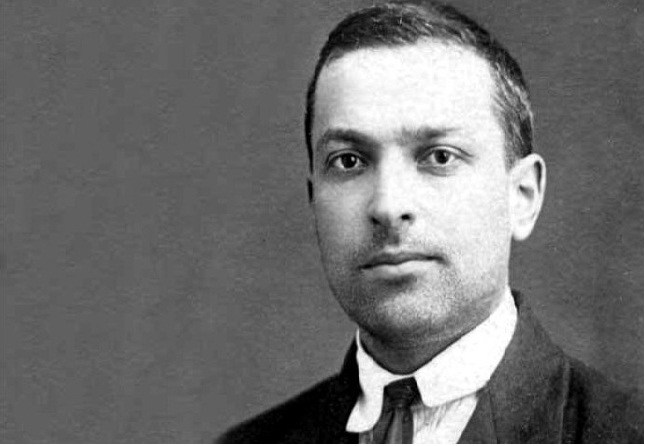
Lev Vigotsky Biography
In the bosom of a Jewish family near Vitebsk, Lev Vygotsky was born, the second of eight children. He was born on November 17, 1896, in present-day Belarus and died on June 11, 1934, in Moscow. Considered the precursor of historical-cultural psychology; amateur theater and Shakespeare was characterized by being very analytical. He also decided to rewrite his surname Vygotsky, instead of Vygodski (“benefit” in Russian).
His family wanted him to study medicine at the university, but shortly after registering he passed into law at the Moscow State University. After one year, he enrolled in the faculty of philosophy and letters of the popular university while studying law he continued to research on philosophy. These universities were very open in cultural aspects, since they accepted women and people of any religion, for this reason, they were not recognized by the Tsarist educational authorities.
When finishing the university, he wanted to dedicate himself to the education, central subject in his intellectual life. At first, he worked as a professor of psychology in Gomel and then moved to Moscow where he had students who would be his collaborators and followers, A. R. Luria and A. N. Leontiev. But around that time the October Revolution started, where discrimination against Jews was abolished and Lev Vygotsky began to be linked to politics. That is why he became an intellectual and cultural celebrity. He managed to teach Russian grammar and literature, psychology and logic, aesthetics and history, directed the theater section of a newspaper and founded a literary magazine. All this in different schools and institutes. He read Karl Marx, Friedrich Engels, Baruch Spinoza, Friedrich Hegel and Sigmund Freud.
“Experience teaches us that thought does not express itself in words, but rather realizes itself through words.” Lev Vygotsky
Unfortunately, in the midst of his busy life and research, he contracted tuberculosis in 1919 and was sent to a sanatorium, since at the time they thought it was necessary to isolate him from any kind of physical contact. However, he managed to overcome the disease (although his life would be very short) and started a laboratory in psychology to study children with learning delays of all ages. In this experiment, he was able to gather the information that would appear in the book Pedagogical Psychology, published in 1926. Lev Vygotsky married a little earlier with Rosa Nóievna Sméjova, with whom he had two daughters: Guita Lvovna Výgodskaya and Ásya Lvovna Výgodskaya.
He worked along with great psychologists who would later be recognized and who somehow permeated their influence. They tried to reformulate psychological theories from the social context to use pedagogical strategies that would help with language, not only to normal children but also to children who were considered “abnormal” at the time (left-handed, mentally retarded or some kind of cognitive defect).
In 1926, he relapsed gravely for his tuberculosis while finishing his thesis on the psychology of art. Although he managed to recover his health, he declined a bit in spirit and stopped publishing, although he continued with his research in psychology and education. That is why he began to read other writers and researchers in that field such as Jean Piaget, Wolfgang Köhler, and William Stern.
Already widely recognized for his work, in 1929 he was invited to train pedagogues at the University of Central Asia, and in 1930 he led a seminar with film director Sergei Eisenstein and linguist Nikolai Marr. Likewise, detractors of his research began to appear, and his own group was divided by the directions and intentions of his research.
Lev Vygotsky undertook a great project to answer the criticisms of his work and thus took out the book Thought and Speech. But soon after, he would fall ill and dictate the last chapters from his bed. He was buried in 1934 in the Novodevichy cemetery.
Vygotsky is recognized for trying to unite the social and the science, thus he thought that the “historical” dimension was the very center of psychology, and therefore culture was a very important factor since he considered mental processes as of a social nature. He also investigated language as a constructor of the mind and its progress in the child, passing through states that he defined as emotional, concrete objects and abstraction.
“The most admirable thing is that the consciousness of language and social experience arise contemporaneously and in an absolutely parallel way.” Lev Vygotsky
He also gave great value to the social and cultural context of learning and by beginning to use language. Therefore, it is considered one of the most outstanding theorists of the psychology of development (of learning) and founder of historical-cultural psychology. It is also said that he was a precursor in neuropsychology because at the end of his life he tried to combine his knowledge in medicine with his vast knowledge in psychology and literature.
